Algerian Architecture Tours Unveils North Africa’s Best-Kept Secrets
31-07-2025
If stunning architecture and off-the-radar wonders excite you, Algeria belongs on your bucket list. This North African country is seriously underrated. It is packed with history, culture, and design that spans centuries. An architecture tour in Algeria includes ancient Roman ruins that rival anything found in Italy, intricate Islamic mosques with mind-blowing tilework, and French colonial buildings that whisper stories from another era.
As more travelers search for off-the-beaten-path destinations with real character, this place is stepping into the spotlight. Whether you’re an architecture buff, a history nerd, or just someone who loves exploring places with soul, Algeria’s landmarks will leave you inspired.
Key Takeaways
- Algeria is a hidden gem in North Africa for architecture lovers.
- From the UNESCO-listed Casbah of Algiers to the sandstone dreams of Timimoun, this destination is perfect for culturally curious travelers.
- Whether you’re tracing ancient aqueducts or admiring intricate zellige tilework, Algeria offers an immersive architectural journey.
- Air Algérie offers convenient domestic connections from Algiers to culturally rich places and architectural gems in Algeria.
The Casbah of Algiers: Get Lost in the Soul of the City
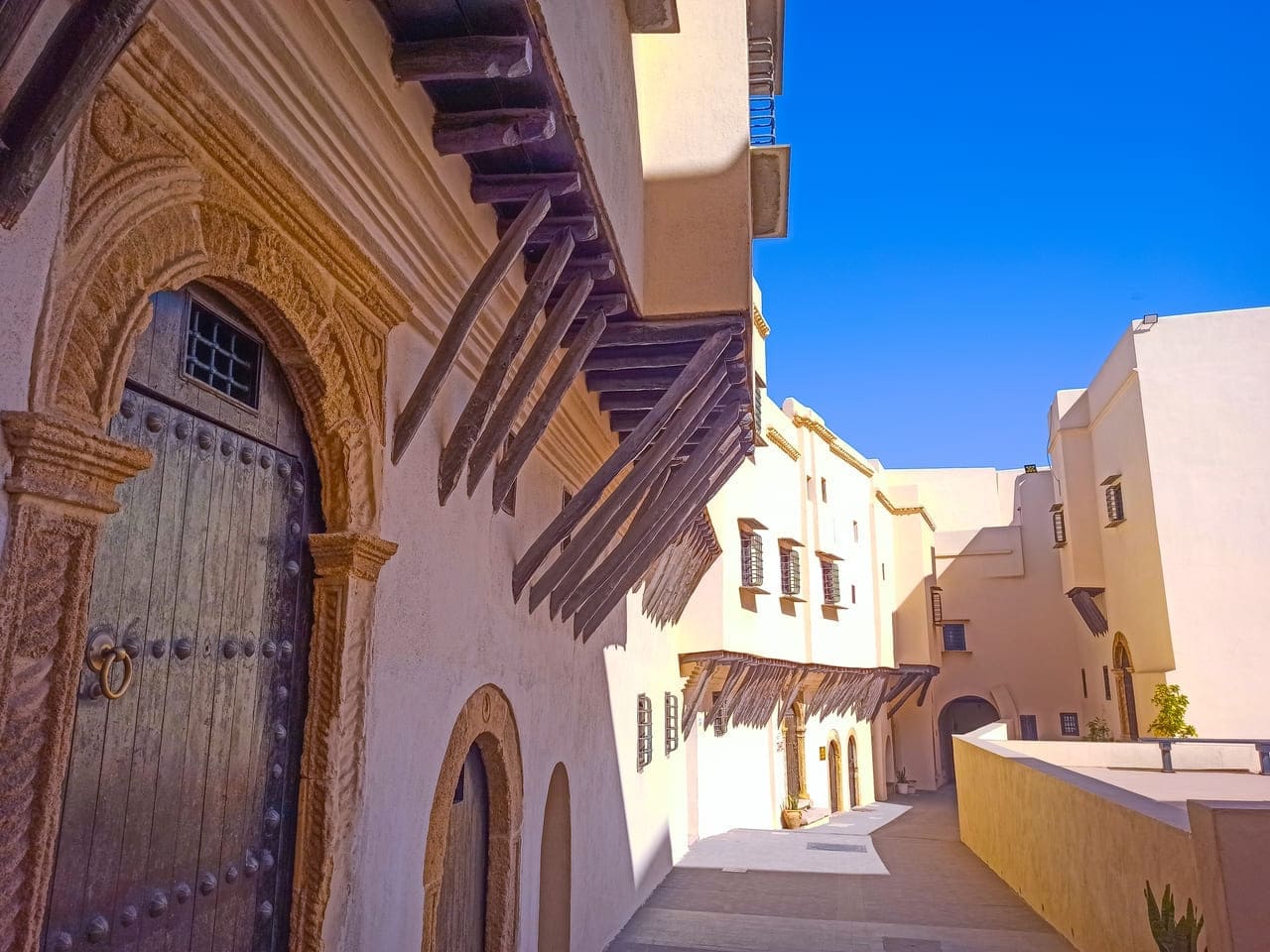
If there’s one place in Algiers that feels like stepping straight into a living museum, it’s the Casbah, a maze of winding alleys, whitewashed walls, hidden courtyards, and centuries of stories layered into every stone. Perched on a hillside overlooking the shimmering Mediterranean, this ancient medina is a UNESCO World Heritage Site and a vibrant time capsule of Algeria’s past.
Casbah’s roots stretch all the way back to the 4th century BC, when Carthaginian traders first eyed this coastal spot. Over the centuries, it grew into a citadel of Islamic culture, Ottoman rule, and resistance during colonial occupation. Today, it’s a place where ancient mosques, Ottoman-era palaces, and street life coexist in a rhythmic blend of history and humanity.
Wander the narrow lanes, and you’ll stumble upon architectural treasures like:
Ketchaoua Mosque
A stunning blend of Moorish and Byzantine influence, originally built in 1612, then transformed into a cathedral under French rule, and finally restored as a mosque after independence.
Palais des Raïs (Bastion 23)
A beautifully restored palace complex that offers a glimpse into Algiers’ aristocratic past, now hosting exhibitions and cultural events.
Palais Mustapha Pacha
Built in 1798, this lavish residence is now home to the Calligraphy Museum of Algiers, where ornate script meets intricate tilework in the most elegant way.
El-Kebir
The oldest mosque in the Casbah, dating back to 1097, with a rare blend of Almoravid and Hispano-Moorish architectural details.
But the Casbah is more than its monuments. It’s in the scent of fresh bread drifting from a tiny bakery, in the craftsman carving wood in a sun-dappled courtyard, and in the greetings exchanged between neighbors leaning over wrought-iron balconies. Try street food like mahjouba, brik, or a glass of mint tea while watching life unfold in the plazas.
Join our Casbah heritage tour to get the full backstory on this historic quarter.
Grande Poste d’Alger: Where Moorish Splendor Meets Modern Algeria
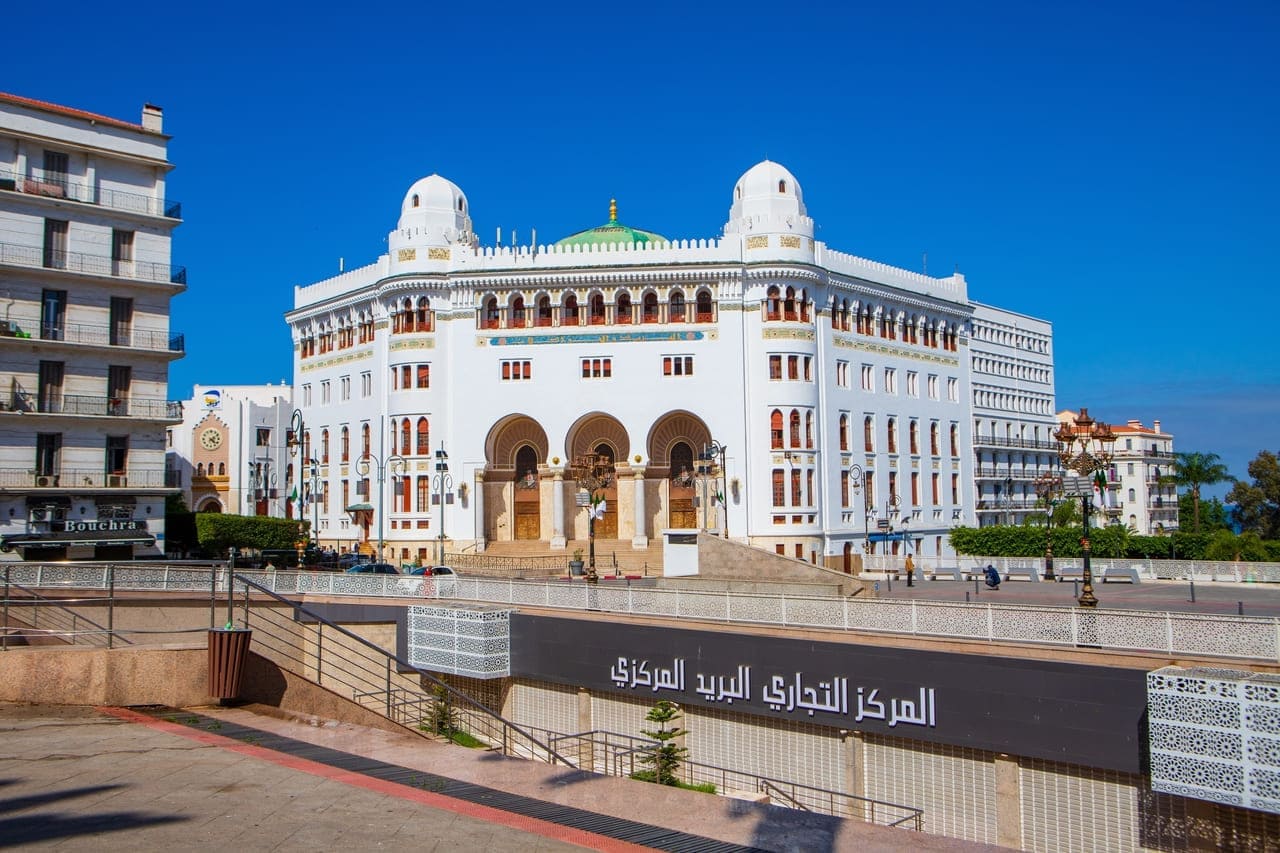
Right in the heart of Algiers, rising above the buzz of Boulevard Mohamed-Khemisti, stands one of the city’s most beloved landmarks – the Grande Poste d’Algérie. If you are someone who appreciates beautiful buildings with a story to tell, the Grande Poste d’Alger is must-see.
Built in the early 20th century, this architectural gem is a proud showcase of Neo-Moorish style, and a French take on traditional Arab-Andalusian design. With its white façade, domed roof, and horseshoe arches, the building looks like it belongs in a fairytale – part palace and part post office. Step inside, and you’ll find soaring ceilings, intricate tilework, and vintage fixtures that echo back to a time when even sending a letter was a grand affair. The Grande Poste is a living museum, as it serves with a dual purpose as a post office and a cultural space. Its galleries and exhibits display Algerian art, old telegrams, retro phones, stamps, and postcards that whisper stories of the past.
Want views? Head up to the rooftop terrace for panoramic scenes of Algiers’ whitewashed skyline and the shimmering Mediterranean beyond.
Djemila: A Roman City Frozen in Time
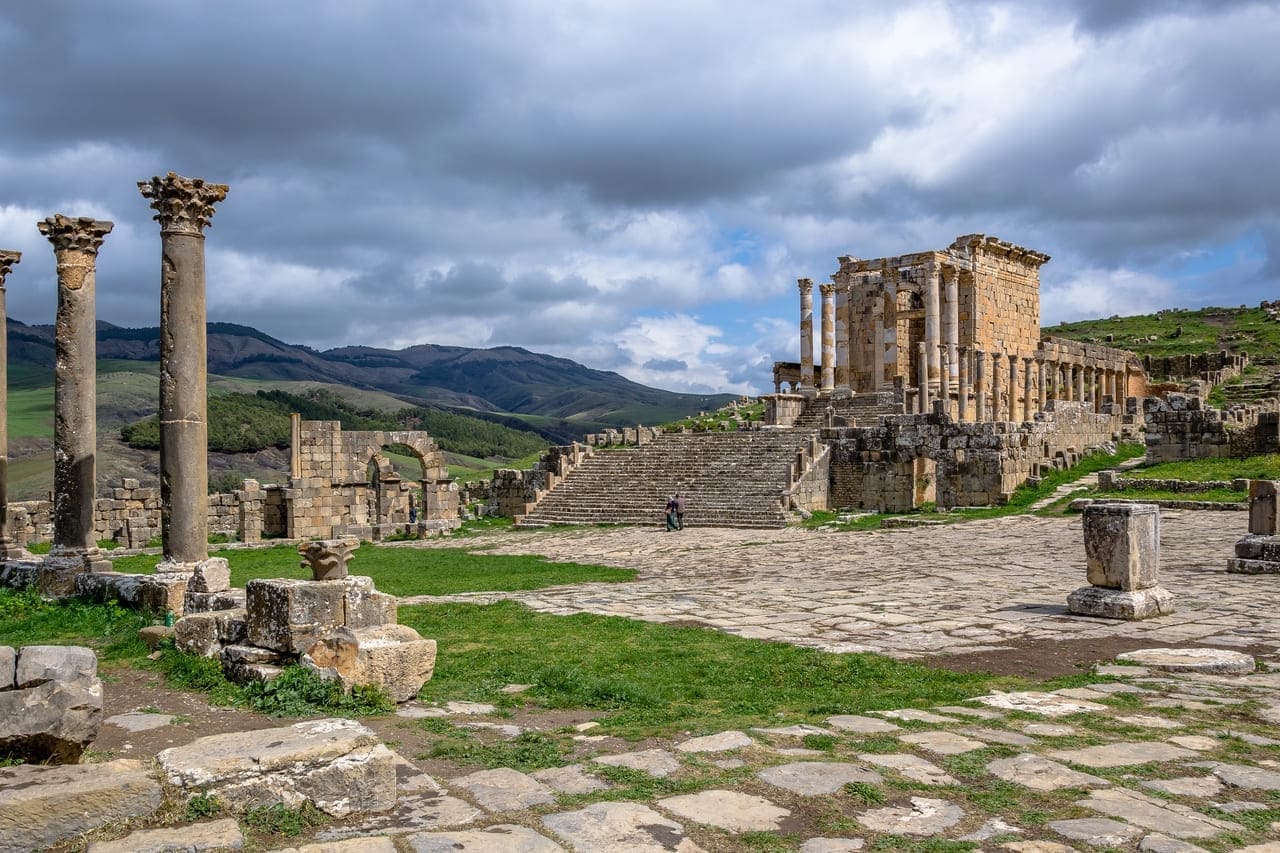
Tucked into the green hills of northern Algeria, Djemila feels like a secret the Roman Empire left behind. Known in antiquity as Cuicul, this ancient city is now a UNESCO World Heritage Site. If you’ve ever dreamed of exploring a Roman city without the crowds of Rome or Pompeii, this is your moment. It is easily one of the best-preserved Roman ruins in the world.
Founded in the 2nd century AD, Djemila was a bustling trade hub where Roman merchants mingled, prayed, debated politics, and soaked in the public baths. Fast forward to today, and the bones of that ancient life still stretch across the landscape. You can wander through a sprawling amphitheater, stand in the footsteps of orators at the forum, marvel at the mosaic-covered floors of once-grand houses, or explore temples and basilicas that echo with lost rituals. The mosaics here are vivid, detailed, and surprisingly intact like storybooks etched in stone and color.
How to Reach Djemila
Djemila lies near the modern town of Sétif, about 150 km south of Algiers. Air Algerie operates a non-stop flight from Algiers to Sétif.
Best time to Visit
While the site is open year-round, the best time to visit is during the warmer months (June to September) when the light stretches long into the evening. Djemila is the kind of place you want to linger, camera in hand, imagination running wild. So, visit early in the day during peak season if you want to roam in peace.
Visit Djemila Roman Ruins with us.
Timgad: An Architectural Tour Through the Roman Empire’s African Outpost
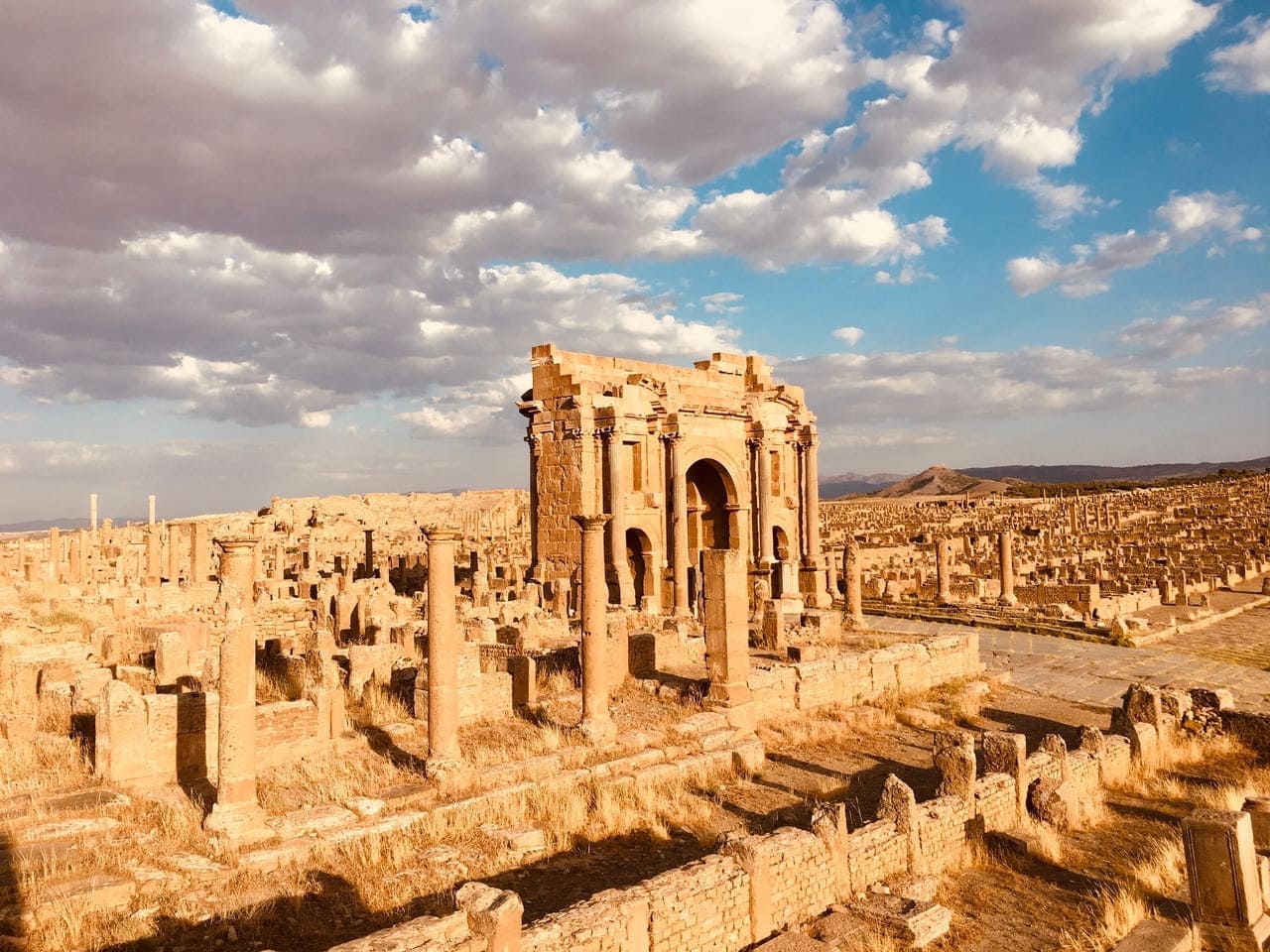
Imagine standing in the middle of a Roman city where the streets are still laid out just as they were 2,000 years ago. That’s Timgad (once called Thamugadi), a stunning archaeological treasure tucked into Algeria’s Aurès Mountains, about 40 km east of Djemila. Founded in AD 100 by Emperor Trajan after the Roman conquest of Numidia, this city wasn’t just a military outpost, it was Rome’s idea of urban perfection brought to life in North Africa.
Walking through Timgad today is like stepping onto the set of an ancient epic. Surrounding you are the bones of a once-thriving metropolis: grand temples, public baths, a basilica, residential quarters, and one of the best-preserved Roman theatres on the continent. If you’re on architecture tour in Algeria, Timgad delivers.
How to Reach Timgad
The site is easy to reach by road from Constantine or Algiers, with guided tours making it even more accessible. While some ruins are clearly marked, a good guide will help you unlock the deeper stories behind the stones.
Book a Roman ruin tour at Timagad on FlyingCarpet.Travel
Ghardaïa: Desert Harmony in the M’Zab Valley
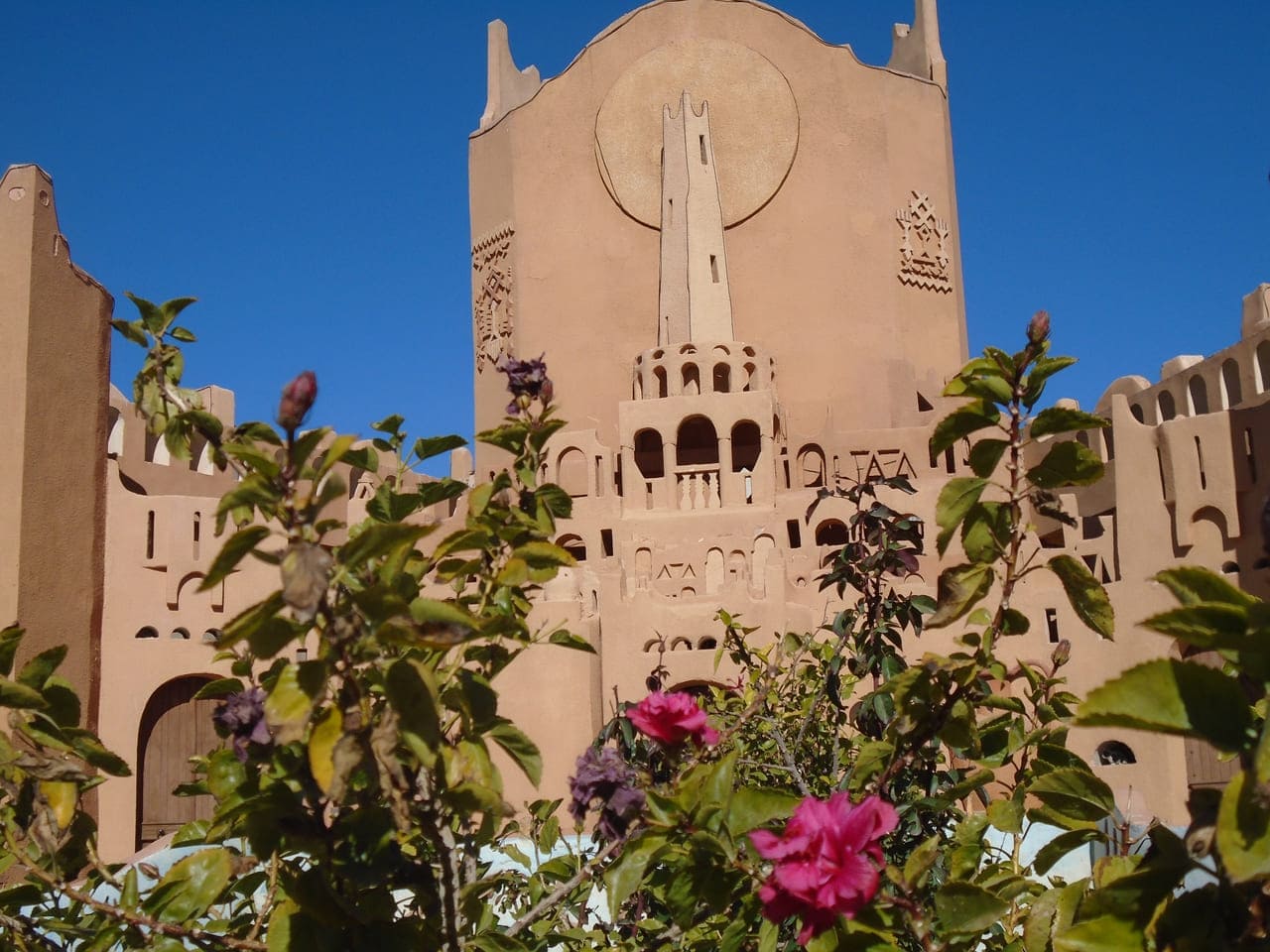
About 600 km south of Algiers, the UNESCO-listed town of Ghardaïa rises out of the northern Sahara like a desert mirage. But this isn’t an illusion, it’s a masterpiece of Ibadi Berber ingenuity. Founded in the 11th century, Ghardaïa is the crown jewel of the M’Zab Valley, a cluster of five fortified towns known for their minimalist beauty and communal spirit.
Here, homes painted in soft whites, desert pinks, and earthy reds climb the hills in terraces, designed to keep cool in the brutal heat. The central Moorish-style Mosque, with its iconic pyramid-like minaret, isn’t just a place of prayer, it’s an architectural anchor that radiates across the town’s winding alleys and bustling souks. Local markets, artisan quarters, and palm-fringed courtyards bring the town to life, especially in the early morning when the desert sun casts long, golden shadows. This is a place where ancient urban planning meets modern sustainability.
How to Reach Ghardaia
Air Algérie operates regular direct flights between Ghardaïa’s Noumérat–Moufdi Zakaria Airport (GHA) and Algiers’ Houari Boumédiène Airport (ALG).
Kabylie: Mountain Villages with Soul
Now, transport to cooler temperatures: imagine cool mountain air, pine-draped peaks, and stone villages nestled among the clouds. Welcome to Kabylie, a proud and fiercely traditional Berber region in northern Algeria. While every village has its charm, Tiferdoud stands tall as the highest village in Kabylie, perched at nearly 1,200 meters in the Djurdjura Mountains.
With just over 1,500 residents, the locals of Tiferdoud welcome travelers with warmth.
How to Reach Kabylie/Tiferdoud
A scenic 2-hour road trip from Algiers, through winding mountain roads and olive groves.
Book a trip to Kabylie.
The Cyrillic Tower of El-Kala: Where Ruins Meet the Reserve
Tucked away in Algeria’s far northeastern corner, just shy of the Tunisian border, this weather-worn landmark sits quietly within El Kala National Park – a UNESCO Biosphere Reserve known for its rare birds, shimmering lakes, and a coastal ecosystem that feels almost untouched. The Cyrillic Tower is what remains of the Fort of the Mill, a 17th-century Ottoman stronghold that the French later expanded in the 19th century to protect their growing trade routes. The fort’s strategic perch offers sweeping views of the Mediterranean coast.
How to Reach Annaba
Air Algérie is the only airline offering non‑stop flights between Annaba and Algiers. Take a taxi from the airport to El Kala (~48 km).
Sahara Desert Architecture Tour in Timimoun
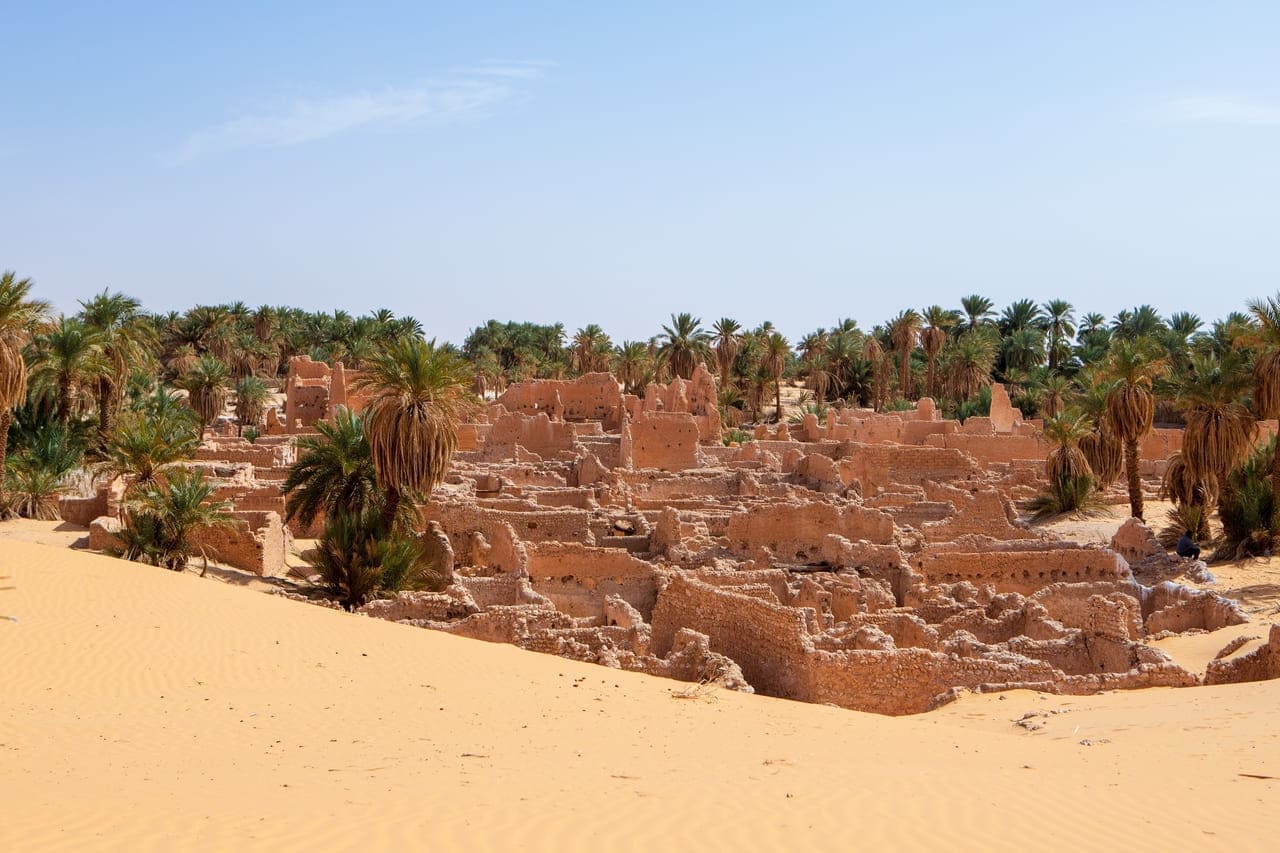
If you’ve ever imagined an oasis town painted in rust-red tones, framed by sculpted dunes, and glowing at sunset like it’s lit from within, Timimoun is that dream brought to life. With its labyrinthine alleys, iconic Sudanese-influenced architecture, and age-old ksars (fortified villages), Timimoun is a living canvas of resilience and elegance in the face of desert extremes. A desert safari here isn’t just a tour; it’s a slow immersion in elemental beauty.
While tourism is growing here, Timimoun keeps its roots. Many guesthouses and eco-lodges are built in traditional styles using local materials. Beneath Timimoun’s palms lies a quiet wonder – the foggara. This ancient, gravity-fed irrigation system captures water from distant aquifers and channels it underground to nourish the oasis. Visitors are encouraged to support conservation projects, like maintaining foggaras or planting date palms with local families.
How to Reach Timimoun
Air Algérie is the sole airline offering nonstop flight between Algiers (ALG) to Timimoun (TMX).
Book a desert tour on a quad.
Beyond the Usual: Explore More with Us
Whether you’re wandering the Roman streets of Timgad, crossing the dramatic bridges of Constantine, or admiring the intricate Almoravid details of El-Kebir Mosque in Algiers, Algeria offers an architectural journey few travelers have experienced. These places, layered with Berber, Roman, Islamic, and colonial history, tell stories that deserve to be seen and remembered.
At FlyingCarpet.Travel we shine a spotlight on lesser-known destinations and help you discover intimate, culturally rich places that are often left off the mainstream map. Explore our site to uncover more hidden gems around the world and book flights, hotels and experiences to your chosen destination.
Frequently Asked Questions Related to Algeria
1. What is the best time to visit Algeria?
Spring (March-May) and autumn (September-November) are ideal seasons to visit Algeria; this is when temperatures are comfortable for exploring the ruins.
2. Do I need a visa to travel to Algeria?
Yes, US citizens need a visa to enter Algeria. It must be obtained at least 2-3 months in advance through the Algerian embassy or consulate.
3. How do I travel within Algeria to visit architectural sites?
Domestic flights (e.g., to Timimoun, Ghardaïa, or Annaba) are available from Algiers. For closer cities like Constantine or Timgad, private tours are ideal for comfort and safety.
4. Is English widely spoken in Algeria?
French and Arabic are the main languages. English is not widely spoken outside major hotels and tourist services, so learning a few French phrases or hiring a local guide is helpful.
5. Is there a cultural etiquette to keep in mind?
Places like Ghardaïa and Kabylie are regions that are steeped in tradition. Dress modestly, especially around religious sites, and always ask before photographing people.
